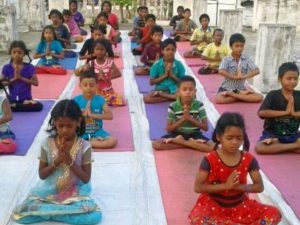Reduce Depression Produced by Internet Addiction with Mindfulness
By John M. de Castro, Ph.D.
“As we get more connected to our wireless technology, we appear to run the risk of damaging our brains’ wiring, and disconnecting from the face-to-face interaction that our social and psychological systems need. With its emphasis on harnessing attention with intention (i.e. redirecting it on purpose), mindfulness—with all its scientifically-established health and well-being benefits—has the potential to keep us from drifting hopelessly away from one another.” – Mitch Abblett
Over the last few decades the internet has gone from a rare curiosity to the dominant mode of electronic communications. In fact, it has become a dominant force in daily life, occupying large amounts of time and attention. As useful as the internet may be, it can also produce negative consequences. “Problematic Internet Use” is now considered a behavioral addiction, with almost half of participants in one study considered “Internet addicts”, developing greater levels of “tolerance” and experiencing “withdrawal” and distress when deprived. This phenomenon is so new that there is little understanding of its nature, causes, and consequences and how to treat it.
Mindfulness training has been shown to be helpful with each of the components of addictions, decreasing cravings, impulsiveness, and psychological and physiological responses to stress, and increasing emotion regulation. It is no wonder then that mindfulness training has been found to be effective for the treatment of a variety of addictions. Hence, there is a need to further explore the consequences of internet addiction and the relationship of mindfulness with internet addiction and its consequences.
In today’s Research News article “Internet Addiction and Depression in Chinese Adolescents: A Moderated Mediation Model.” (See summary below or view the full text of the study at: https://www.ncbi.nlm.nih.gov/pmc/articles/PMC6865207/), Chi and colleagues recruited middle school students (aged 11 to 15 years) and had them complete a questionnaire measuring internet addiction, depression, positive youth development (measuring positive psychological qualities), and mindfulness.
They found that 20% of the youths showed symptoms of internet addiction and 24% showed symptoms of depression. They also observed that the higher the levels of mindfulness, the lower the levels of depression and internet addiction and the higher the levels of positive youth development. On the other hand, the higher the levels of internet addiction the lower the levels of mindfulness and positive youth development and the higher the levels of depression. They also found mediation. The positive relationship between internet addiction and depression was present when mindfulness was low but not when it was high. Similarly, the negative relationship between depression and positive youth development was present when mindfulness was low but not when it was high.
These results are correlative and caution must be exercised in concluding causation. Nevertheless, the results replicate previous findings of mindfulness being negatively related to depression and internet addiction and positively related to positive psychological qualities. But the present findings add to these understandings by demonstrating that being addicted to the internet is related to higher depression and lower positive psychological qualities. Importantly, they found that mindfulness moderates the relationships between depression and both internet addiction and positive psychological qualities. High levels of mindfulness appear to prevent internet addiction from producing depression and from depression reducing positive psychological qualities.
Internet addiction is a growing problem especially in youths. These results are encouraging though that mindfulness not only is related to less internet addiction but also appears to blunt the relationships of internet addiction with depression and positive psychological qualities. This suggests that training in mindfulness with youths may help prevent addiction to the internet and its consequent effects on depression and youth development. Testing this remains for future research.
So, reduce depression produced by internet addiction with mindfulness.
“when correctly practised and administered, mindfulness meditation is a safe, non-invasive, and cost-effective tool for treating behavioural addictions and for improving psychological health more generally.” – Mark Griffiths
CMCS – Center for Mindfulness and Contemplative Studies
This and other Contemplative Studies posts are also available on Google+ https://plus.google.com/106784388191201299496/posts and on Twitter @MindfulResearch
Study Summary
Chi, X., Liu, X., Guo, T., Wu, M., & Chen, X. (2019). Internet Addiction and Depression in Chinese Adolescents: A Moderated Mediation Model. Frontiers in Psychiatry, 10, 816. doi:10.3389/fpsyt.2019.00816
Abstract
Research has revealed that Internet addiction is a risk factor for adolescents’ development of depressive symptoms, although the underlying mechanisms are largely unknown. The present study examines the mediating role of positive youth development and the moderating role of mindfulness to determine the association between Internet addiction and depression. A sample of 522 Chinese adolescents completed measures related to Internet addiction, positive youth development, mindfulness, depression, and their background information, for which the results reveal that positive youth development mediates the relation between Internet addiction and depression. Moreover, the associations between both Internet addiction and depression as well as positive youth development and depression are moderated by mindfulness. These two effects were stronger for adolescents with low mindfulness than for those with high mindfulness. The present study contributes to a more thorough understanding of how and when Internet addiction increases the risk of depression in adolescents, suggesting that Internet addiction may affect adolescent depression through positive youth development and that mindfulness can alleviate the negative effect of Internet addiction or a low level of psychological resources on depression. The implications for research and practice are finally discussed.
https://www.ncbi.nlm.nih.gov/pmc/articles/PMC6865207/









